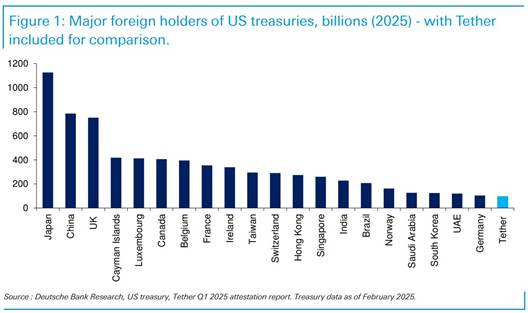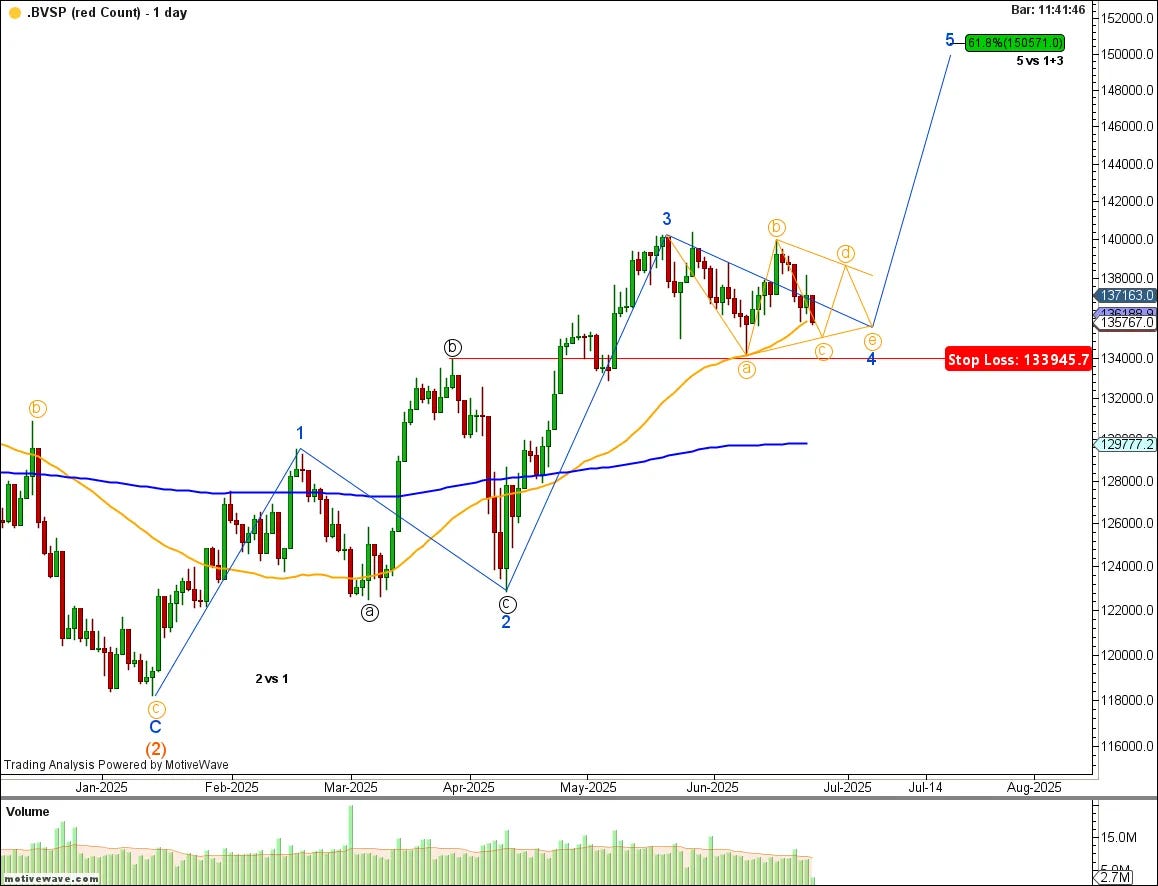Companies with idle cash and little strategic creativity are finding a new pastime in cryptocurrencies. Some follow MicroStrategy's example and buy bitcoins with funds that should be earmarked for sustainable business growth. Others, in an even bolder move, convert their digital assets into US Treasury bonds to obtain the “Stable Coin” seal. The first option is a clear aberration of governance; the second, a distortion disguised as financial sophistication.
The topic gained momentum in recent days with the announcement that Tether – the world's largest stablecoin – reached the impressive mark of US$98.5 billion in US Treasury bonds, ranking among the largest foreign holders of US debt. It is worth remembering that, in 2020, this figure was close to zero. The shift is so significant that it led the US Congress to draft the bill called GENIUS (Guiding and Establishing National Innovation for US Stablecoins), whose objective is to create a regulated ecosystem for these currencies by August. The proposal was blocked in the last vote, but it is expected to move forward this year.
Tether, whose market value surpassed US$150 billion in May, essentially acts as a money market fund disguised as a cryptocurrency. Its reserves backed by Treasury assets function, in practice, as an informal channel for financing US debt. More than 99% of the market value of stablecoins is pegged to the dollar, and the issuers of these tokens hold more than US$120 billion in reserves in US currency. This explains why the US government is interested in accelerating its regulation: it is a way to strengthen the demand for dollars at a time when exchange rate hegemony is being challenged by other geopolitical poles.
Below is a chart from Deutsche Bank showing the growth of Tether's reserves in Treasuries:
However, there is a fundamental contradiction in this process. While the adoption of stablecoins could represent a lever for the dollar's supremacy in global digital infrastructure, on the other hand, the lack of regulation turns the sector into a fertile ground for dubious practices. The Bloomberg article is incisive in pointing out the similarities between Tether's current situation and the collapse of Wirecard, the German company that falsified more than US$2 billion in its financial statements and imploded the fintech market in Europe. Germany, in fact, is currently the epicenter of regulatory concerns regarding the transparency of these currencies' reserves.
The Wall Street Journal article reinforces the warning. The article highlights that the biggest loser with the tightening of the rules proposed in the GENIUS Act would be Tether. Among the most critical points are the lack of regular audits, the failure to disclose detailed composition of assets and the use of opaque financial instruments. This opacity is what allows issuers to mix “other assets” in their portfolios without any restrictions, as rightly observed by Mosca.
If an investor wants to take exposure to US government bonds, there are hundreds of regulated and audited funds that offer this option in a safe manner, with lower operational and cyber risk. The appeal of stablecoins is more associated with marketing than with financial logic. And when a company opts for this type of investment, it moves away from its productive mission and comes dangerously close to speculation. As a shareholder, this makes me seriously question the competence of management.
Despite this, there are exceptions. Yesterday I commented here on Mosca on the case of the brokerage firm Robinhood (HOOD), which managed to apply the concept of Blockchain in a genuinely useful way: allowing European clients to invest in US stocks without paying brokerage fees. In this case, the use of crypto technology does not have a speculative bias, but rather a functional one, which should be the essence of the digital financial movement.
Stablecoins will not disappear. What is at stake is how they will be inserted into the traditional financial system. If they continue to grow without regulation, we will have new versions of FTX and Wirecard. But if they are brought under the umbrella of existing regulations – with auditing, asset segregation and legal clarity – they can indeed become legitimate instruments of liquidity and transaction.
It remains to be seen whether the US Congress will have the courage to confront the interests that orbit these digital currencies. Tether, for example, already moves figures that put it on a direct collision course with large global funds and even central banks. It is no coincidence that there is resistance to the advancement of the GENIUS Act. When money finds loopholes in the legislation, the lobby takes care of the rest.
Mosca will continue to follow this topic closely, with the caution of someone who has seen many “technological miracles” crumble when confronted with the reality of governance and transparency. The difference between innovation and illusion usually lies in regulation – and common sense.
Technical Analysis
In the post “voltando-vaca-fria”, I commented on the IBOVESPA: “The survival of this count is based on the possibility of a triangle drawn in orange. What cannot happen is the violation of the 133,945 level; if this occurs, it puts at risk a fall to levels at least below 120 thousand.”
As I have already mentioned, I am using a new data provider that does not include information from the Brazilian stock exchange. I still have the old system, which is already paid for until the beginning of next year — then I will see if I continue with it. Honestly, I had decided not to publish any more charts and suggestions for this asset, as I realized how archaic MetaStock is compared to MotiveWave, which I have been using for a few years.
If it weren't for the high price I charge for my services, I would have abandoned it, even though I know that most of my readers follow the IBOVESPA. I decided to try for a while longer. However, the suggestions will have to be reduced, as, as you can see in the chart below, I don't have the same level of tools.
– Oh, David, enough excuses, let's get to what you can offer.
In the aforementioned post, I discussed the possibility of a triangle forming — and it seems that this is exactly what is forming. If I am right, expect a correction around 136,000, followed by a rise to the 150,000 level. But the triangle may fail, and this mini drop should not exceed 133,945 points, as already mentioned. I suggest buying when the 140,000 level is broken.
The S&P 500 closed at 6,227 (ATH) up 0.47%; the USDBRL at R$5.4250, down 0.62%; the EURUSD at €1.1797, unchanged; and gold at 3,358, up 0.60%.
Stay tuned!
Original Post: Click Here
This is not an investment recommendation.
About the Author of this Post: David Gotlib has 45 years of experience in investment management. An engineer from Polytechnic School of the University of São Paulo, he was one of the founders of the first Brazilian hedge fund in 1993 (AUM US$ 1 billion). Later, he was Managing Director of Deutsche Bank Asset Management (AUM R$ 2.2 billion) until the company was sold to Bradesco. He is currently the manager of his own investment portfolio and the author of the blog Acertar na Mosca, where, since 2011, he has shared his thoughts on the global economy and the financial market on a daily basis.







